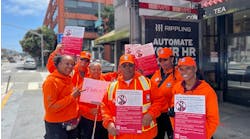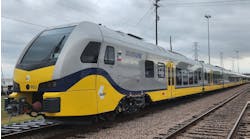During the summer and fall of 2015, MnDOT and consultants worked diligently to analyze station and facility site locations, forecast ridership and revenue, and identify an optimal service plan for the NLX Project. On Dec. 16, 2015, the Minneapolis-Duluth/Superior Passenger Rail Alliance, in conjunction with the Minnesota and Wisconsin Departments of Transportation, announced project details.
The preliminary estimate of the total cost to implement the NLX Project is between $500 and $600 million. This includes stations, equipment and the necessary track and roadway grade crossing improvements to provide reliable, daily, high-speed intercity passenger rail service. Previous cost estimates approached $1 billion dollars.
The NLX passenger rail service will operate on 152 miles of existing BNSF Railway track between Minneapolis and Duluth with an operating plan of four round trips per day at speeds up to 90 miles per hour with an end-to-end travel time of approximately 2 ½ hours.
Projected ridership for the first year of operation, anticipated to be in 2020 if federal funding is available, is estimated in a range of 700,000 to 750,000 annual riders and increasing to 900,000 to 1,000,000 annual riders in 2040. Operating costs are estimated in the range of $17.5 million per year average for the first five years of operation. Projected revenue from fares is estimated in the range of $12.8 million per year average for the first five years of operation.
These preliminary project and operating cost estimates will be updated and a final benefit-cost analysis will be prepared upon completion of cost-sharing discussions with BNSF. MnDOT is also proceeding with the completion of preliminary engineering, Tier 2 Project Level environmental review, and a Financial and Implementation Plan. By early 2017, the NLX Project will be shovel-ready, which means the project will be in position to move into final design and construction. Pending availability of federal funding, NLX service could begin as early as 2020.
Station site locations selected
MnDOT has selected station site locations. On the south end, the NLX Project will expand the current Target Field Station in downtown Minneapolis and share it with Northstar Commuter Rail. In Coon Rapids, the station will be located on Foley Boulevard across from the Metro Transit Park and Ride. In Cambridge, a station will be located at the City Center Mall, sharing space with city hall and the fire and police departments. In Superior, the station will be on the north side of Belknap Street, three blocks west of Tower Avenue. In Duluth, a new waiting room and platform will be added to The Depot, which will continue to be utilized by its existing tenants and the North Shore Scenic Railroad. The final location of the Hinckley Loop station has not yet been determined. The location will be finalized by the end of March 2016 with completion of the Hinckley Loop study.
A layover facility is required in Duluth and potentially one other location to park trains overnight. NLX will also require a light maintenance facility to perform routine maintenance and minor repairs. MnDOT will continue to study the potential for a light maintenance facility to service the trains in either Sandstone or Duluth.
With the selection of site locations, preliminary concept designs for each of the stations, maintenance facility and layover facility locations have been prepared and will be presented at the upcoming public meetings.
Next phase of environmental work begins
A Tier 1 Service Level Environmental Assessment, completed in August 2013, evaluated impacts of the project as a whole, compared multiple corridor alternatives, and resulted in the selection of a preferred corridor. Since the completion of the Tier 1 EA, MnDOT has prepared an alternatives analysis and concept engineering designs of station, layover and light maintenance facility sites, advanced track and roadway engineering and refined an operating plan to reflect four round trips per day at speeds up to 90 miles per hour.
At this time, MnDOT, in consultation with the Federal Railroad Administration and with cooperation from the Minneapolis-Duluth/Superior Passenger Rail Alliance and Wisconsin Department of Transportation, is initiating the preparation of the Tier 2 Project Level EA on the refined NLX project. The Tier 2 EA will update the Tier 1 impact analyses based on station/facility concept plans, preliminary engineering plans for track infrastructure and grade crossings and the refined operating plan. Preliminary technical findings from the analysis conducted at the proposed station areas will be available for review and discussion at the upcoming public meetings, as well as an overview of the Tier 2 EA process (see sidebar on page 2 for public meeting dates and locations). A completed Tier 2 EA is anticipated to be distributed for public review in the spring of 2017.
Twin Cities (Minneapolis/Coon Rapids)
Wednesday, Feb. 24
Fridley Community Center, 6-8 pm
Twin Ports (Duluth/Superior)
Thursday, Feb. 25
The Depot, 6-8 pm
Cambridge
Monday, Feb. 29
Cambridge City Center, 6-8 pm
Hinckley
Thursday, March 3
Finlayson High School, 6-8 pm

